A conservation non-profit is asking the National Marine Fisheries Service to list a host of Gulf of Alaska Chinook salmon populations — known more commonly as king salmon — as “threatened” or “endangered” under the U.S. Endangered Species Act, and to designate critical habitat for dwindling king stocks in southern Alaska waters.
According to the Wild Fish Conservancy, “This emergency action is being taken in response to the severe decline and poor condition of Chinook populations throughout the state of Alaska.” The proposed listing would protect king salmon and their habitat from the Canadian border north and west all the way to the Aleutian Islands.
For much of the new century, Chinook populations throughout Alaska have dwindled. In rivers farther north, like the Yukon and Kuskokwim, fish numbers have crashed severely. The lack of salmon in these rivers is impacting subsistence fishing and other long-term impacts on salmon-dependent people and wildlife are coming into focus.
Commercial fishing is being impacted throughout the state by smaller stocks of fish. Unfortunately, even regulatory actions — like reduced harvest or canceled commercial seasons — have not helped the fabled Pacific salmon rebound.
“For decades, scientists have been sounding the alarm that Alaska’s Chinook are in dire trouble,” said Emma Helverson, executive director of the WFC, in a recent news release. “Despite existing management plans and years of efforts by the state of Alaska, Chinook salmon continue to decline in abundance, size, diversity and spatial structure throughout the state. Through this action, we are asking the federal government to undertake a formal status review and implement protections warranted under the Endangered Species Act, including designating critical habitat protections, to ensure the survival of these iconic fish.”
As noted, the state of the king fishery in Alaskan waters isn’t anything new. Data from the state of Alaska agrees with WFC’s assertion that the fish are in trouble. In state waters, one would be hard-pressed to find a Chinook population that could reasonably be described as “stable.”
The petition to list southern Alaska Kings under the ESA isn’t universally popular. Doug Vincent-Lang, the state commissioner of Alaska Fish and Game, told the Alaska Beacon recently that federal fisheries managers first needed to consider whether the king salmon population is actually in long-term trouble before considering listing the fish as threatened or endangered.
“The question is: Have these stocks reached the level where you’re concerned about their extinction? That’s where the ESA needs to kick in,” Vincent-Lang told the Beacon. “It doesn’t need to kick in as a precautionary measure.”
Another question could be posed, as well: At what point does Alaska Fish and Game recognize that the state’s most recognizable commercial and game fish are in real trouble? When populations all but disappear, as is the case in the Yukon-Kuskokwim basin? In the case of Kings in that giant river basin, the answer to Lang’s question is a resounding, “Yes.”
“Most people are unaware that there are Chinook populations in Alaska in far worse condition than Chinook in other parts of the Pacific Northwest that already receive protection under the Endangered Species Act due to their severe condition,” claimed Conrad Gowell, a biologist with WFC and co-author of the petition.
“Ironically, certifiers and the seafood industry are leading concerned consumers to believe Chinook from Alaska are sustainable, when in fact they are disappearing before our very eyes. No one wants to be eating the last wild Chinook from any river.”
The irony? WFC’s petition to the NMFS only seeks ESA protection for king salmon in the Gulf of Alaska. In the Yukon-Kuskokwim basin to the north, where the salmon numbers have already crashed, the group has chosen not to engage.
WFC has a long history of going after state fisheries managers and the commercial salmon fishing industry in the state. In 2020, the group was firmly criticized by SalmonState, a wild-salmon advocacy group in Alaska, when WFC sued salmon trollers in the region under the assumption that trolling for salmon in Southeast Alaska was contributing greatly to the decline of the southern resident orca population in Puget Sound.
SalmonState went so far as to label WFC as a group of “out of touch, ideological, serial litigants.”
In response to WFC’s petition to list Gulf of Alaska kings under the ESA, SalmonState issued an equally firm response:
"With this petition, the Wild Fish Conservancy is doubling down on its attempts to shut down fishing in Alaska without consulting with or speaking to the people they're sledgehammering. This petition is an extreme attempt to reallocate wild salmon that, once again, fails to consider or address the actual threats to Chinook.”
The actual threats, according to SalmonState?
There are many. But the commercial harvest of kings is but a blip on the radar. Instead, the cascading effects of climate change — warming waters, both in the ocean and in the spawning rivers — are much more threatening to the long-term survival of kings from the Gulf of Alaska south to the British Columbia border, says SalmonState Executive Director Tim Bristol.
Additionally, Bristol noted, the increasing threat from hard-rocking mining along the Alaskan border with British Columbia poses a significant existential threat to southern Alaska’s Chinook salmon, and, frankly, to all salmon that use Alaskan waters. Finally, bycatch from the Bering Sea fishing fleet is a real salmon killer. But, again, WFC’s petition doesn’t include Bering Sea stocks.
When asked why the group’s petition blatantly ignores the clearly imperiled king populations north of the Aleutians, Gowell was pragmatic.
“Trying to do everything all at once was a massive undertaking,” Gowell said. “We felt there was a natural breaking point (at the Aleutians) for our petition to end and another to begin.”
Another?
“We’re not writing off a petition to list kings up there,” he said of the populations that are foundering in the Bering Sea. “But there are a lot of people working on that issue, and not a lot of people working in the Southeast.
“It’s pretty grim up there,” Gowell continued. “But it’s no less grim for some of our small king populations in Southeast. We feel that focusing on the fish in the Southeast was enough to bite off.”
The problem with WFC’s approach, says Bristol, who is based in Homer, is that, by going after commercial fishing interests in the Gulf of Alaska — which a listing under the ESA would most certainly do — the Washington-based WFC is putting all of Alaska in a defensive crouch.
“There’s a lot of hard work that has to happen if we’re going to save these fish,” Bristol says. “And you’re just flat wrong if you think going after the very people who depend on these fish for their economic survival is the way to go.
“What [WFC is] doing,” Bristol continues, “is weaponizing the Endangered Species Act.”
This month’s WFC petition starts a review process that will likely take months, and, if the petition is determined to have merit, even years. The first step is a 90-day review by the National Oceanic and Atmospheric Administration (the parent administration of the NMFS). If the petition results in a “positive finding,” and it’s determined the Gulf of Alaska Chinook population is, indeed, in trouble, a public comment period will begin.
The public comment period could last months, and if those comments spur NOAA to act on the petition, there will be a scientific review. NOAA has a full year from the date of the petition to conduct the review, at which point the agency would determine whether the designated Chinook stocks warrant ESA protection. If the fish is determined to be worthy of listing, a proposed rule is then crafted and once again put forth for public comment. A final rule listing Gulf of Alaska king salmon under the Endangered Species Act would then be drafted, with a deadline of one year from the creation of the proposed rule.
Best-case scenario for WFC’s petition? A final rule protecting Chinook salmon in Alaska is at least two years out.
Regardless of the petitioners and how they are using the ESA, data doesn’t lie. King salmon populations in Alaska are in the worst shape in memory. Numbers are down, fish are smaller and leaner, and the threats to them are seemingly endless.
From the overarching impacts from the global climate crisis to the ongoing threats from open-pit mining that range from the Brooks Range in the middle of the state to the trans-boundary region along the border with British Columbia, salmon of all stripes face an uncertain future.
But, as Bristol put it, “the ESA is a blunt tool, and to apply this widely when it could be used to more and better effect elsewhere is an abuse of the act itself.”




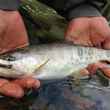




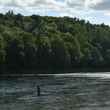





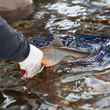




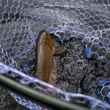



![Instructors John Juracek [left] and Brant Oswald [right] from The School of Trout (photo: Tim Romano). school of trout instructors john juracek brant oswald](https://www.hatchmag.com/sites/default/files/styles/gallery_thumbnail/public/field/image/romano-0024.jpg?itok=X_had7Jf)
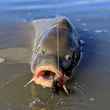



Comments
Akfishkiller replied on Permalink
WFC IS IGNORING TRAWLERS WHO INTERCEPT BIG NUMBERS OF KING SALMON COASTWIDEAND IN BERING SEA.MAYBE THEY ARE MAKING THE COMMON MISTAKE OF IDENTIFYING TROLLERS AS TRAWLERS?
Michael m anderson replied on Permalink
The salmon decline has many causes. Smaller adult size should be setting off bells and whistles but it isn't. Look at the herring and euligan population. They are collapsing from over fishing. WARNING no food for the salmon. The whole ecosystem is collapsing. Not from global warming, but from over fishing of the forage species. Roe harvesting for the Japanese market and Sardine fishing will kill all salmon eventually.
Anonymous replied on Permalink
WFC calling out the trawlers here:
https://www.bowenislandundercurrent.com/highlights/26000-bc-chinook-salm...
Jack Donachy replied on Permalink
Hi Chris,
Thanks for reporting on this. We hope you'll continue to dig and follow up.
- What impact do Alaska's Chum & Pink Salmon hatcheries/"ranching" have on the Chinook Population? In terms of competition for ocean resources? In terms of overlapping spawning habitat as Pinks expand their range & numbers?
- Is Alaska's approach to the harvest of herring and herring roe Really sustainable, or is it taking an important food source away from Chinook?
- Alaska Continues to permit in-river sport fishing for Chinook Even Where Runs Have Plummeted. River fish are spawning fish.
- And there continues to be commercial Chinook harvest at the mouths of rivers where runs have precipitously declined.
- What impact is boat traffic having on Chinook spawning grounds. It seems that while in some places, local people are discussing this matter, state "biologists" are choosing to whistle past it without even taking a look.
Thanks. Barbra & I look forward to further reporting on this matter.
Jack Donachy
Cordova, Alaska
Rene Limeres replied on Permalink
Tim Bristol of SalmonState has some valid concerns about the far-reaching consequences of ESA response on the part of the Feds to the continued decline of chinook salmon in southern Alaska. But he represents southern coastal fishing interests mostly ( SE and the major ports in SC), where the fishery is more complex, occuring almost exclusively in marine waters and targetting a mixed stock of fish from BC, Columbia River and rivers further south. Much of these fish are of hatchery origin. The situation in southwest Alaska is totally different, where the large sprawling free flowing rivers comprise the greatest remaining rearing habitat for wild salmon in North America. Nearly all the fisheries there target returning salmon that are intercepted along rivers or in mouths or bays, and hatchery fish are not a component. The king populations all across SW Alaska have been in serious decline since around 2007, and, despite what Doug Vincent Lang may say, the state of Alaska has done nothing effective to mitigate the decline, and it's high time for some serious action from the Feds. Under the ESA, they will be required to examine (and regulate) all possible contributing factors, among which are certainly the destructive trawl fishery, the vast overproduction of hatchery pink and chum salmon by the U.S., Japan and Russia, illegal fishing and climate change. My hope is for ESA designation for all chinook populations in Alaska.
Pages